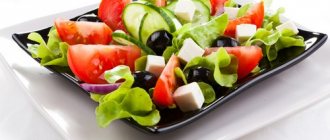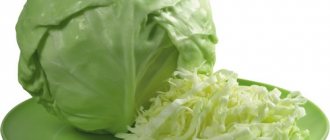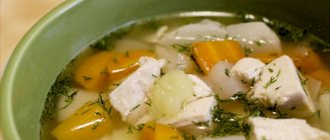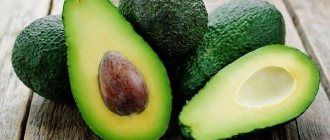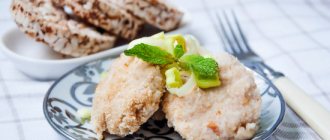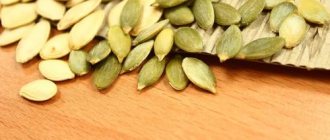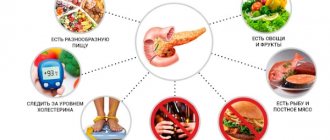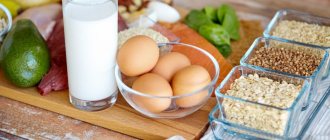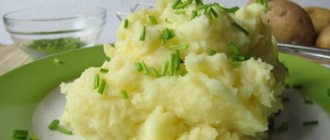Pancreatitis is inflammation of the pancreas. The pathology occurs in acute and chronic forms. The condition has quite specific symptoms: severe pain in the left hypochondrium, sometimes of a girdling nature, foul-smelling stool, nausea and vomiting.
Diet for pancreatitis of the pancreas is one of the main directions of treatment of the pathology. The patient’s menu depends on the general health and period of the disease. It is necessary to adhere to therapeutic nutrition for several months.
General principles
Nutrition for pancreatitis of the pancreas should be gentle. Basic principles of the diet:
- fractional meals - food must be taken five to six times a day in small portions;
- dishes should be pureed, which facilitates the process of digesting food;
- Allowed cooking methods are steaming and boiling;
- Fresh vegetables and fruits are completely prohibited, i.e. uncooked;
- the permissible daily amount of salt is no more than 5 grams;
- It is mandatory to take infusions and decoctions of rose hips;
- Dishes served to the table must be warm - hot and cold are contraindicated;
- Canned food, semi-finished products, fatty/fried/highly salted dishes and foods are completely prohibited.
Deviation from the principles of dietary nutrition can provoke the development of an attack of pancreatitis.
Turkey meat in the acute phase and remission phase of the disease
You can eat turkey for pancreatitis immediately after the peak of the exacerbation passes - the first days, accompanied by severe pain, nausea and other dyspeptic disorders. As these symptoms go away, it’s time for the pureed fillet and weak broths based on it. Turkey meat is a suitable dietary option in the acute phase of pancreatitis, having the necessary qualities:
- easy digestibility,
- nutritional value,
- absence of coarse fibers,
- minimal fat content,
- low cholesterol levels,
- hypoallergenic.
Before preparing turkey food in the acute phase, the meat fillet must be chopped into pieces, skin removed and boiled for an hour and a half. The boiled pulp must be cut or passed through a meat grinder or blender, and from the resulting minced meat, make puree soup, soufflé, zrazy, meatballs or steamed cutlets.
When the disease enters the remission phase and the patient’s condition improves, his table can be diversified with turkey dishes prepared using more “tasty” technologies. The meat can not only be boiled, but also baked in the oven or in a slow cooker.
And also, if you feel better, you can give the patient soup with weak secondary turkey broth.
Permitted and prohibited products
To reduce the production of pancreatic juice and reduce the load on the inflamed gland, the following must be completely excluded from the patient’s diet:
Menu for chronic pancreatitis
- Soups cooked in rich meat, fish and mushroom broths, as well as complex soups - cabbage soup, pickles, borscht. Cold and dairy products are excluded.
- Bread – today’s baked goods made from wheat/rye flour, puff pastry and pastries, pies fried in oil, flatbreads.
- Fatty meat - pork, lamb, duck, goose - sausages, offal, canned food and smoked meats.
- Fish. Fatty varieties, smoked and salted are prohibited.
- Milk and lactic acid products with high fat content.
- Cereals – millet, pearl barley, wheat, corn.
- Fried and hard-boiled eggs.
- Vegetables - turnips, radishes, garlic, peppers, eggplants, cabbage, spinach.
- Sweets - jam, ice cream, fresh dates, grapes, bananas, figs.
- Spicy seasonings.
- Coffee, strong brewed tea, coffee, soda, grape juice.
- Refractory fats - pork, beef, lamb.
Allowed and prohibited foods for pancreatitis
When developing a menu for every day, it is necessary to take into account the recommendations of nutritionists and use only approved products. This:
- dried loaf, biscuits, homemade crackers;
- vegetarian soups with the addition of pureed vegetables - potatoes, zucchini, pumpkin, carrots - vermicelli, semolina or oatmeal;
- lean meats - chicken, rabbit, turkey - in the form of steam cutlets, soufflé, quenelle, beef stroganoff;
- low-fat fish varieties - pollock, carp, cod;
- cereals - oatmeal, semolina, rice - are used for preparing porridges, casseroles, puddings;
- low-fat milk and lactic acid products;
- steam omelette without yolks;
- vegetables - potatoes, zucchini, beets, pumpkin, cauliflower, carrots, green peas;
- sweet berries and fruits in the form of mousses, jellies, puddings, oven-baked apples;
- sauces - milk and prepared with vegetable broth (when using flour, the latter is not sautéed);
- butter and vegetable oil;
- weak tea with lemon, still mineral water, rosehip decoction, juices diluted with water.
How to cook meatballs correctly
And now some original recipes that allow you to take your mind off thoughts about the disease and please your loved ones with healthy food. Housewives rarely cook according to the recipe and follow the dosages. For a diet, the principle of preparation and combination of products is more important, so the amount of ingredients can be taken by eye.
Meatballs with vegetables
Prepare minced meat: meat, salt, egg white, parsley. Roll into balls and place on the bottom of the multicooker. Finely chop the carrots, broccoli, add canned green peas. You can use potatoes if you wish. Add water and add a couple of tablespoons of low-fat sour cream (10 - 15%). Turmeric can be used as a coloring agent for the sauce. Cook in the “Stew” mode for 30 – 40 minutes.
Diet for acute pancreatitis
If we talk about what diet is recommended for a patient with an acute form of inflammation, then this is the 5P treatment table. During the first two to four days, a person is recommended to be completely hungry. Only liquid intake is allowed - a decoction of rose hips, Borjomi (still), weak tea. Then the patient switches to therapeutic nutrition. The menu is allowed to include unsalted but carbohydrate-rich dishes.
An approximate list of dishes that may be included in the menu:
- steam omelette with egg whites;
- meat soufflé;
- fish and meat dumplings;
- pureed soups - rice and oatmeal - and vegetarian options;
- vegetable purees;
- pureed porridges - rice, buckwheat, rolled oatmeal;
- apples in the form of jelly or mousse;
- fruit drinks made from rose hips, cranberries, black currants;
- tea with added milk;
- cottage cheese and dishes made from it;
- cereal puddings.
Before going to bed, you can offer kefir, yogurt, a glass of water with a spoonful of honey dissolved in it, prunes and raisins.
Recommendations
For pancreatitis, it is better not to consume turkey broth as a separate dish, but to use it for cooking vegetable and cereal soups. You can add a small amount of sour cream or cream to such soups.
And do not in any way equate bouillon cubes with natural meat broth. Their use is contraindicated for any problems in the digestive system, including pancreatitis.
The diet for patients with pancreatitis differs from that prepared for healthy people. A special attitude is formed towards thermal and mechanical processing of food. There are a large number of recipes that allow you to diversify your diet and make the process of therapeutic nutrition more enjoyable.
Sample weekly menu
When drawing up a menu for the week, it is necessary to remember that the patient’s diet should be varied. When developing a menu for a patient for the whole week, you can use the following recommendations.
Sample weekly menu for pancreatitis
For breakfast, you can serve a salad of boiled beets and dried fruit compote, 150 grams of low-fat cottage cheese and a decoction of rose hips, a steam omelette without yolks, weak tea with biscuits, pureed oatmeal and berry jelly, pumpkin porridge, rosehip drink, cheese with biscuits, rosehip decoction, pureed buckwheat porridge, compote.
Second breakfast: well-cooked rice porridge with the addition of steamed raisins, carrot salad with vegetable oil, apple stuffed with dried apricots and baked in the oven, pumpkin and carrot puree, boiled beets, apple baked with sugar.
For lunch, it is allowed to serve vegetarian soups, for example, borscht, boiled fish, garnished with well-cooked rice, boiled beef, cottage cheese casserole, steamed chicken cutlet, pasta with the addition of boiled minced meat, sauté. Afternoon snack options: jelly from permitted fruits, vegetable roll, fresh berry jelly, fruit pudding, oven-baked potatoes, sandwiches with butter and a piece of cheese, bean puree.
Dinner: baked apple puree and low-fat yogurt, rice porridge with raisins, Varenets, vinaigrette and matsoni cheese, steamed cauliflower, a glass of curdled milk, zucchini caviar, kefir, steamed omelet, fermented baked milk, rice porridge pudding and low-fat yogurt.
By alternating dishes, you can create a “delicious” weekly menu that will provide the sick person’s body with all the necessary substances, but at the same time the pancreas will receive a minimal nutritional load. You can find recipes for some dishes below.
Basic requirements for therapeutic nutrition
Drug treatment of pancreatitis is complemented by diet. It is worth listing the rules for creating a menu:
- The amount of protein in the diet increases. At least 140 grams per day – protein has a beneficial effect on the body.
- It is necessary to reduce the amount of carbohydrates so that the amount does not exceed 35 grams per day.
- The amount of fat should not exceed 80 grams.
- The energy value of the dishes reaches 2800 kilocalories.
It can be difficult for an unprepared person to create a diet based on the stated numbers; it is better to prepare a diet from a specialist.
Nutrition for combined pancreatitis with gastritis or cholecystitis
If the underlying disease is accompanied by the development of cholecystitis, then the menu is allowed to include:
- slimy soups made from rice, oatmeal or semolina;
- pureed porridge cooked in water; adding milk and butter is strictly prohibited;
- vegetable juices, compotes;
- homemade white bread croutons;
- pureed boiled meat, fish;
- low-fat cottage cheese.
With a combined course of pancreatitis and gastritis, the menu should include pureed soups from oatmeal, rice and semolina, to which you can add egg yolk and a little butter, pureed vegetables - potatoes, carrots, beets - with the addition of milk or cream, steam soufflés, cutlets and dumplings made from minced meat and fish.
The strict option is recommended only during the acute period of the disease. After the condition has stabilized, the person switches to the diet recommended for chronic pancreatitis.
First meal
Soups are prepared in vegetable or secondary meat broth. The latter is done like this: the meat is cooked, the first broth is drained, clean water is poured in, and it is boiled again. Onions, garlic and peppers are not used as they irritate the pancreas.
The soup can be made from chicken breast. It should first be boiled and cut into small pieces. Pour cold water over the finished meat, add potatoes and carrots. When the liquid boils, cook until the vegetables are tender.
Salad vinaigrette
To make lunch more satisfying, you can make a vinaigrette. Boil the beets for 1.5-2 hours, add cold water. Immerse the potatoes, skins and all, into the boiling liquid. Peel the cucumber and soak for a quarter of an hour. Cut all components into cubes, add dill and vegetable oil.
You can eat no more than 100 g of food twice a week.
Features of diet in childhood
The leading principles of the diet for children are fractionation, maximum degree of grinding, compliance with culinary processing requirements, and variety. Small portions, when served frequently, prevent the child from feeling hungry. In this case, there is no disruption of the metabolic process.
During an attack of pancreatitis, adherence to a strict diet is a mandatory step in the successful treatment of the pathology.
Daily caloric intake is calculated based on the weight and age of the child. During the remission stage, the menu is allowed to include fresh vegetables and fruits (limitedly), but the basis of the diet is porridge with milk, minced meat dishes - chicken, turkey, vegetable soups without adding meat, fish - boiled or baked, boiled vegetables, fermented milk products. In small quantities and daily, it is allowed to give the child marshmallows, marmalade, jam, preserves, and honey.
Important! When introducing a new product into the diet, it is necessary to monitor the child’s condition.
What are the benefits of poultry meat?
Due to its valuable composition, turkey has a wide range of useful properties:
- Replenishes the body's reserves with easily digestible protein, which is a valuable source of energy.
- Increases mental performance and physical endurance.
- Helps build muscle mass.
- Improves mood, normalizes sleep.
- Thanks to the presence of phosphorus and calcium, it helps strengthen bone tissue, joints, teeth, hair and nails.
- Due to the enrichment with selenium, it helps to normalize hormonal levels, protects the thyroid gland from diseases, and strengthens the immune system in general.
- It has antioxidant properties, prevents the development and proliferation of cancer cells.
- Helps cleanse the body of toxins and waste, protects cells from the destructive effects of free radicals.
- Reduces the amount of bad cholesterol.
- Improves metabolic processes.
- Normalizes intestinal motility.
- It is useful to include in the diet for constipation.
The big advantage of turkey is that its meat is hypoallergenic. Therefore, it can be eaten by pregnant, nursing mothers, small children, those with reduced immunity, as well as diseases of the digestive tract.
Despite its low calorie content, a serving of turkey can satisfy the body's daily need for omega 6 fatty acids. In terms of fat content, turkey is 3% fatter than rabbit meat, however, the protein of turkey meat is better absorbed.
Recipes
We offer you several recipes for dishes that can be prepared with diagnosed pancreatitis.
Beef pudding
Grind the boiled beef pulp (130 g) in a blender bowl. Add semolina (10 g), beaten egg white, yolk and a little water (about 1/3 cup) to the puree. Add a few salt crystals. Grease the mold with oil, lay out the prepared minced meat and cook in a double boiler.
Fish quenelles
Grind lean fish (300 g) in a meat grinder. Grind a quarter of the dried loaf and pour milk (100 ml) into the pieces. Squeeze out the bread and mix it with the minced meat, add a couple of beaten egg whites. Add salt and mix thoroughly. Using two spoons, form small balls and boil them in salted water until tender. This will take approximately 15 minutes.
Vegetable puree soup
Boil potatoes (2 pieces), carrots and half a small zucchini until fully cooked. Pour the broth into a separate bowl and puree the vegetables using a blender. Pour broth into the puree to the desired consistency and bring to a boil. Cook for 3 minutes. Serve warm, adding a spoonful of sour cream to the soup.
Fish pudding
The fish carcass must be divided into two fillets. Boil the first and rub through a sieve. Grind the second part in a meat grinder. Combine both masses, add egg yolks, butter, salt. Knead. Divide into portioned molds and steam.
Chicken soufflé
Grind the boiled chicken meat in a meat grinder. Add egg yolks and butter to the minced meat. Mix the mass thoroughly. Then carefully add the whipped whites into a fluffy foam. Pour the mixture into a mold and steam.
Banana dessert
Dissolve 2 packs of gelatin according to the instructions. Add 250 ml of natural yogurt from it. Steam some bananas and peeled peaches. Place foil on the bottom of a plastic pan. Form the dessert in layers - biscuit crumbs, yogurt cream with gelatin, banana-peach puree. Alternate layers. Place the sweet in the refrigerator for the jelly to harden.
Compliance with the principles of dietary nutrition for pancreatitis is a prerequisite for achieving stable and long-term remission. The menu for patients with pancreatitis in adults and children, with the proper approach to development, can be quite varied and fully satisfy all the needs of the body.
Energy value of turkey
Turkey meat is a real find for people who need dietary, low-calorie nutrition. The nutritional value of one hundred grams of carcass is on average 160 kcal. The lowest calorie content is for the breast - 88 kcal, fillet - 117 kcal. The most high-calorie foods are liver - 244 kcal, skin - 260 kcal, back - 180 kcal, thighs and legs - 140 kcal.
Poultry meat is rich in:
- vitamins A, B, PP, E, C, D, K;
- iron;
- phosphorus;
- magnesium;
- potassium;
- calcium;
- selenium;
- molybdenum;
- cobalt;
- sodium;
- fatty acids (turkey contains the full daily value of omega-6);
- amino acids.
One hundred grams of breast contains 19.2 grams of protein, 0.7 grams of fat, and no carbohydrates. By the way, carbohydrates are found only in the heart; they are not found in other parts. The fattiest are the liver, wings and thighs. Breast, liver, and ham are the most enriched with protein.
